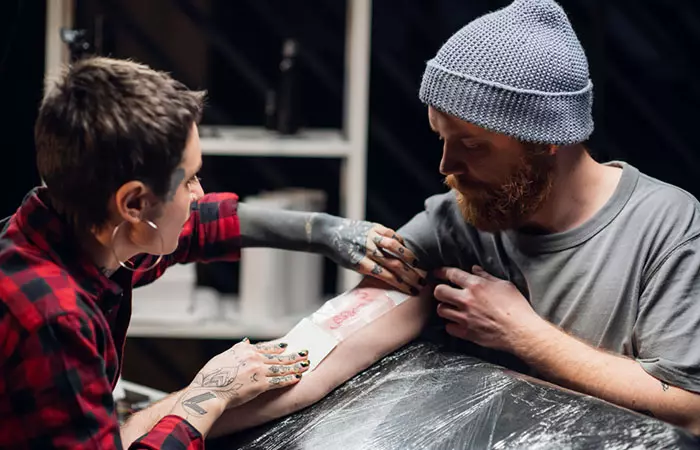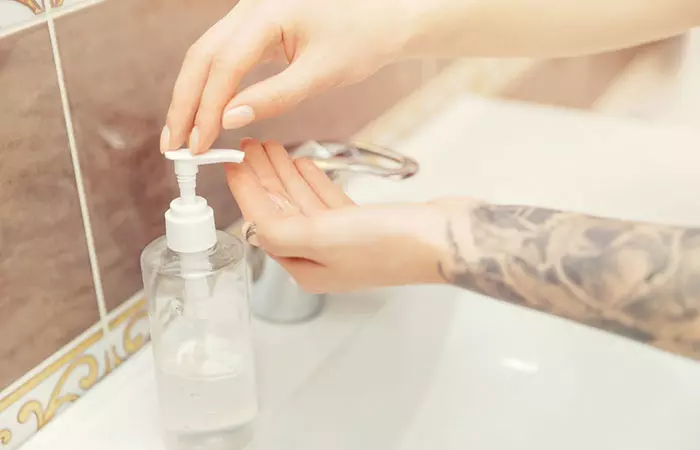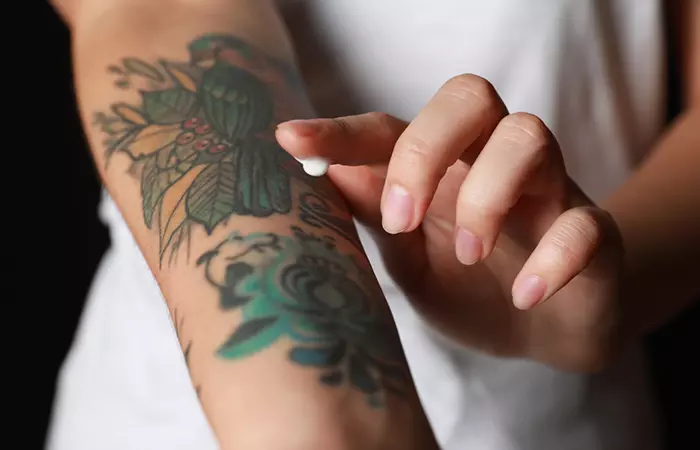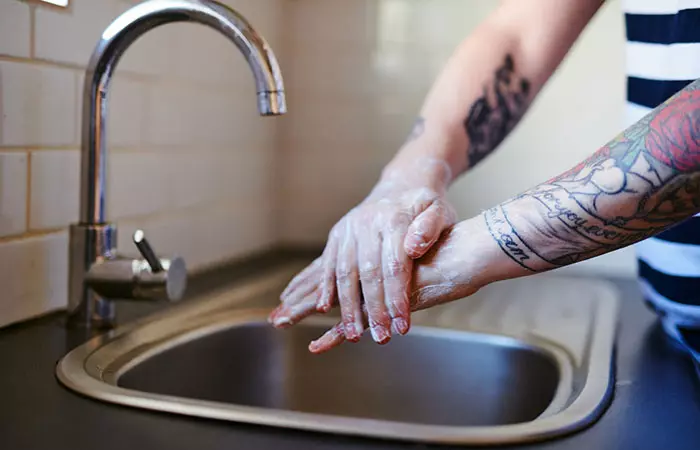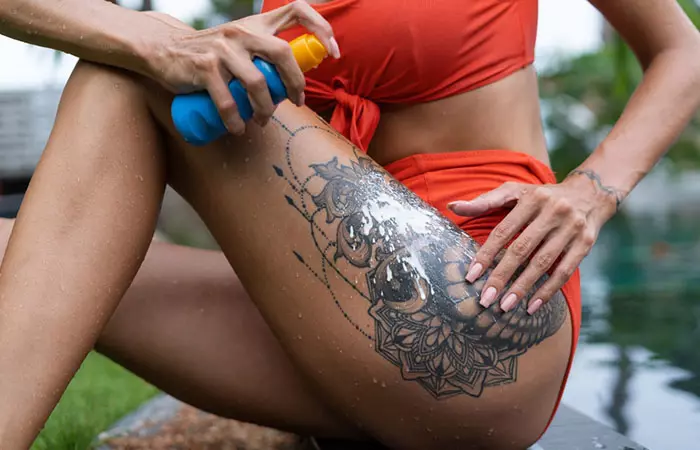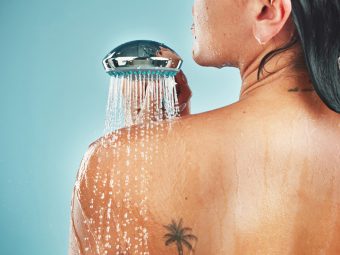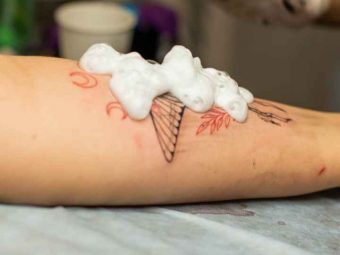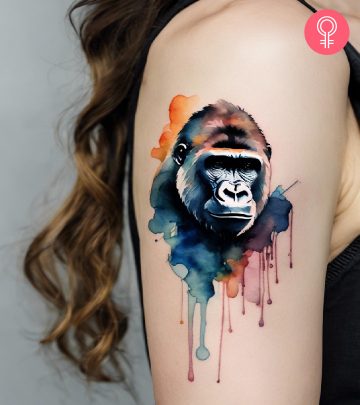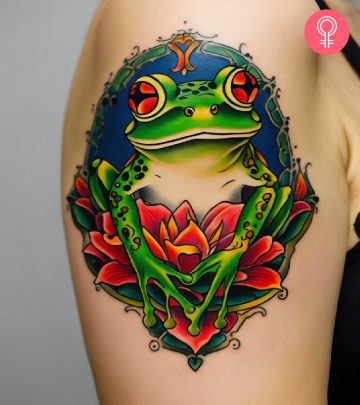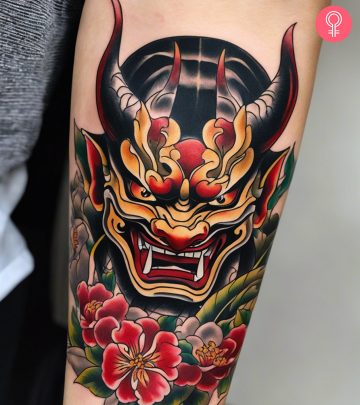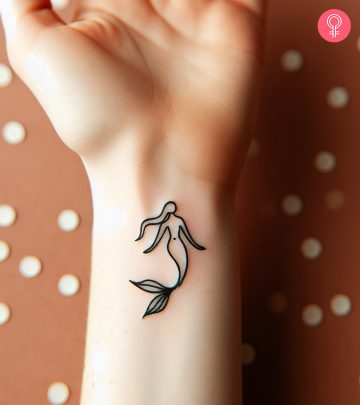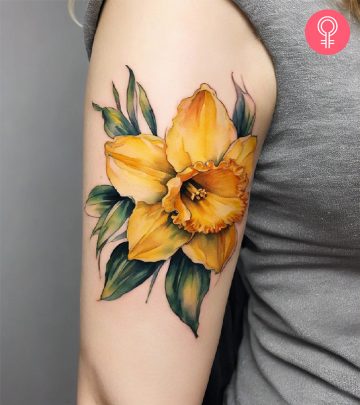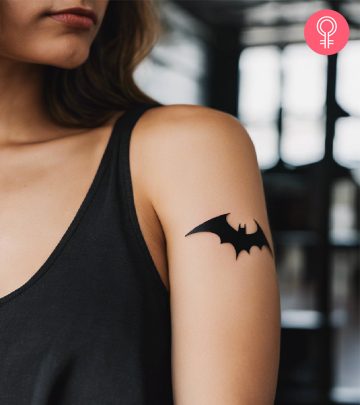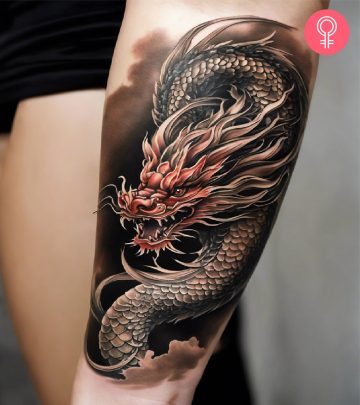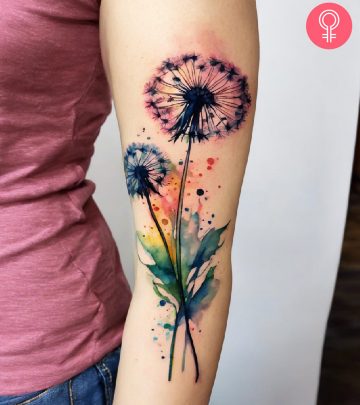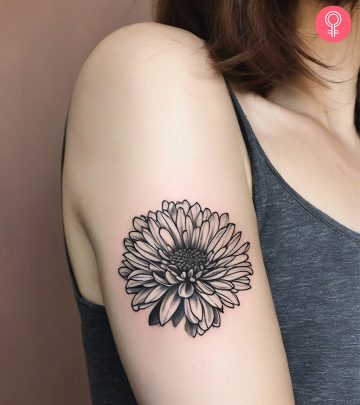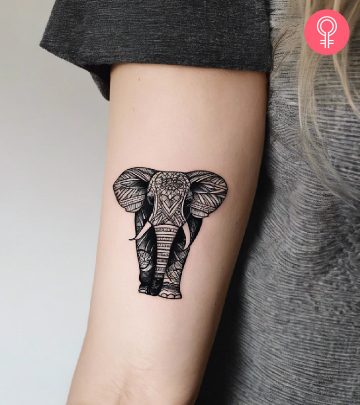Tattoo Aftercare: How To Take Care Of Your New Tattoo
Discover the best aftercare tips for vibrant ink, intact designs, and lasting impressions.

Image: Shutterstock
Taking care of your tattoo is more than just a routine – it is the secret to how great it looks and how quickly it heals. Simple tattoo aftercare steps like keeping it clean and moisturized play a big role in shaping its final appearance. The thing is, tattoo aftercare is not a short-term commitment. Even after it heals, your ink needs ongoing care to stay vibrant and healthy.
So what do you have to do? How do you care for your tattoo when it is fresh? Fret not! This article will help you find the answers to these questions. We have a complete day-by-day guide to make you understand the steps involved in tattoo aftercare. If you want your tattoo to look awesome and stand the test of time, keep reading!
In This Article
Why Is Tattoo Aftercare Important?
When you get a tattoo, it is like creating a small wound on your skin. So, it is important that you treat it gently and make sure your skin heals in a clean place. Tattooing can stress your immune system, and your skin needs time to recover after getting inked. Fresh tattoos may make you more likely to get an infection, so taking care of both inside and outside is equally important. By looking after it well, you can even help your tattoo heal faster. Just remember, a little extra care goes a long way in making sure your skin and your new ink stay healthy!
Each day during the healing stage of your tattoo is important, as the symptoms and needs may vary. It is like a unique journey where your skin is recovering, and what it requires can change from day to day. Being aware of these changes allows you to adapt your care routine, ensuring your tattoo heals well and stays vibrant. Read on to learn the day-by-day aftercare tips.
Tattoo Aftercare: A Day-By-Day Guide
The first few days after getting a tattoo are the most important phase of your tattoo. How you take care of your tattoo during this time can affect the vibrancy of the ink as well as your skin health. Here is a daily guide to help you:
Day 1
After the tattooing process, the tattoo artist will likely cover your tattoo with a dressing. They will provide instructions on when it is appropriate to remove this dressing.
When you are ready to take off the dressing, carefully peel back the tattoo wrap with clean hands. Use mild, fragrance-free soap and warm water to cleanse the tattooed area and pat the skin dry. Wait for a few minutes and apply any recommended ointment or lotion suggested by your tattoo artist.
On the first day/night, you may observe a fluid discharge consisting of blood, plasma, and extra ink, accompanied by redness, soreness, and a slight warmth in the area. If you notice this, gently dab the tattoo with a clean paper towel, press, and remove it without wiping or being rough.
 Did You Know?
Did You Know?Days 2-3
- The tattoo will appear duller as your skin heals, with scabs starting to form.
- Wash your tattoo once or twice daily if you have removed the dressing.
- Let the skin dry before applying the recommended ointment or an unscented lotion.
Days 4-6
- In case the dressing is not removed within 2-3 days, remove the adhesive layer by running the area under water and pulling the adhesive to allow it to detach slowly from the skin.
- Cleanse the area, let the skin dry, and apply the recommended ointment or lotion.
- The redness will start fading, and light scabbing may occur. Avoid picking at the scabs to prevent scarring.
Days 6-14
- Hardened scabs will begin to flake off naturally by now.
- If itching occurs, gently rub on a fragrance-free, alcohol-free moisturizer multiple times daily.
- If the swelling and redness persist, you may have to consult with your artist or a healthcare professional.
Days 15-30
- Big flakes and scabs usually go by now, but some dead skin may still be visible.
- Moisturize until the skin looks hydrated, even if the tattooed area seems dry and dull.
- Full healing may take 3-4 months for the lower layers, but by the end of the third month, the tattoo regains its bright and vivid appearance.
 Quick Tip
Quick TipThe symptoms and reactions may vary from person to person, depending on the size of the tattoo, skin type, and placement. Similarly, the aftercare procedures may also be a little different. Read on to find out how long one should keep the tattoo covered.
How Long Should I Keep My Tattoo Wrapped?
The duration of keeping your tattoo wrapped depends on its type and your artist’s guidance. For more exposed or heavily inked tattoos, like the blacked-out ones, it is advisable to keep them wrapped for an extended period to prevent infections. On the other hand, fine-line tattoos can have the tattoo wrap removed sooner, typically after a few hours. However, most tattoo artists recommend a maximum of four days for using tattoo wrap, following which it is important to clean and moisturize the tattoo. One thing to be careful of is to never re-bandage the tattoo once you have taken off the tattoo wrap applied by your tattooist.
After removing the wrap, the next important step is cleaning the tattoo thoroughly. Read on to learn how to clean your tattoo the right and safe way.
How To Clean A Tattoo Properly
Here are the steps to cleaning the tattoo:
- Clean your hands with an unscented antibacterial soap.
- Wet the tattooed skin with lukewarm water and gently remove the bandage and tape in the direction of your hair growth.
- Rub the soap and warm water in your hands, making a lather.
- Apply it to the tattoo in a circular motion.
- Rinse off the tattoo until the soap particles are gone.
- Pat your skin with a soft paper towel.
- Let it air dry for 10 minutes.
- Once the skin is dry, gently rub the artist-recommended healing or antibiotic ointment into the tattoo.
- Ensure you apply only a very thin layer.
- Repeat this once a day for the first 3-4 days.
Besides healing ointment and unscented soap, there are also other products that you have to use on the tattoo to improve the healing process. Scroll down to learn more about it.
What To Put On A Fresh Tattoo
From healing ointments to sunscreens, you need to choose the right products that cater to your tattoo’s aftercare needs and provide proper protection.
- Antibacterial Soaps
Always use mild, fragrance-free, and antibacterial soaps for tattoos. You may also get cleansers specially formulated for tattoo aftercare.
- Healing Ointments
Choose a recommended healing ointment that aligns with your tattoo artist’s advice to promote optimal healing. Make sure the ointment does not contain any harmful chemicals or ingredients you are allergic to. You may go for an antibacterial ointment also.
- Moisturizing Lotions
After the first week, you can switch from healing ointment to moisturizing lotions. Ensure that the lotion is free of fragrances, ethyl alcohol, and other additives like colored dye, which could potentially dry out the skin.
These are the products you can use on your tattoo. But is there anything that should not be used? Let us find that out in the next section.
What Not To Use On A New Tattoo
There are a few products that you should avoid on a new tattoo. They are:
1. 100% Petroleum Products
It is advisable to steer clear of 100% petroleum-based products, such as original Vaseline. Products with high petroleum content tend to be thicker on the skin, trapping moisture around the new tattoo. This may delay the healing process.
2. Exfoliants
Physical scrubs and chemical treatments containing alpha-hydroxy acids (AHAs), beta-hydroxy acids (BHAs), or any abrasive skin products should be avoided as they may cause skin irritation.
3. Retinol
It may cause changes in the skin texture and pigmentation. Therefore, using it on a healing tattoo might affect the color.
4. Sunscreen
The thick consistency of sunscreen may suffocate the wound and cause a burning sensation. So, it is recommended to use it only after the tattoo is healed.
These are restrictions you need to follow only during the healing stage of your tattoo. Once the tattoo is healed, you can use these products. But when will a tattoo heal? Continue reading to know more about it.
How Long Does It Take For A Tattoo To Heal?
The visible outer layer of skin typically heals within 2 to 3 weeks, but the complete healing process beneath the tattoo may take up to 6 months. Larger tattoos and factors like picking at scabs, lack of moisturizing, skipping SPF, or using lotions with alcohol may extend the recovery time. Moreover, the healing time may vary based on factors like tattoo size, shading, and individual healing abilities, but generally, tattoos should be healed within a week or two.
A fully healed tattoo does not mean the end of care, rather, aftercare is a lifelong commitment essential for preserving the color and quality of your tattoo over time. Scroll down to learn a few tips you should follow even after the tattoo is healed.
Tips For Long-Term Tattoo Care
Following proper tattoo aftercare, once the tattoo is healed, will help maintain the vibrancy of the tattoo and regain the skin’s health. The tips include:
- Apply a gentle, fragrance-free moisturizer regularly to prevent the skin from drying out.
- Always use sunscreen on your healed tattoo when exposed to the sun to prevent fading. The SPF should be a minimum of 50 for fresh tattoos and 30 after your tattoo gets a little old.
- Limit prolonged sun exposure, especially during peak hours, as UV rays can dull your tattoo over time.
- Drink plenty of water to keep your skin hydrated, contributing to overall skin health and the longevity of your tattoo.
- Ensure your skin is well moisturized, especially in extreme weather conditions, to prevent it from becoming too dry. However, be sure to avoid over-moisturizing as it may invite bacterial growth, cause irritation, and clog the skin pores, hence delaying the healing process.
- If your tattoo gets dirty or sweaty, clean it gently with unscented, mild soap, and avoid harsh scrubbing.
- Refrain from wearing tight clothing over the tattooed area to prevent irritation and rubbing.
- Always wear breathable clothes and ensure you use quality fabric for your workout clothes as well.
- If you notice any unusual reactions, consult with your tattoo artist or a healthcare professional promptly.
With poor aftercare and negligence, your tattoo may not look the way it should. From fading to infections, there are several complications associated with it. Read on to know more about it.
During the initial days post-tattoo, it is common to experience redness, itching, and soreness, along with the release of excess ink, blood, and fluid from the skin. However, worsening symptoms may signal an underlying issue and you may have to consult a healthcare professional in such cases. The most common possible complications include:
- Infection
Tattooing damages the upper and middle layers of the skin, increasing vulnerability to bacterial infections and bloodborne infections. The use of contaminated tattoo inks, inadequate skin disinfection pre-tattooing, and scratching during the healing phase can introduce bacteria into the bloodstream, leading to foreign body reactions (1). The symptoms of infected tattoos include red, warm, and painful skin, along with pus discharge.
- Allergy
Sensitivity to tattoo ink might manifest as a red and itchy skin reaction. You may experience an allergic reaction either during or after the healing stage, primarily triggered by the tattoo pigments contained in the ink. Red, yellow, blue, and green pigments pose a higher risk of causing these adverse reactions. Skin irritation may occur due to the presence of impurities in the ink and specific tattoo pigments, such as cobalt (blue), cadmium (yellow), and mercury salt (red) (1).
A lifestyle blogger shared their experience of getting allergic to brown ink and the oozing did not stop and scabs were formed. She said, “In the areas where I had the brown ink, there was so much oozing, and despite babying the tattoo like there’s no tomorrow, deep scabs formed. I’m now left with raised, itchy scarring which has ruined the entire tattoo (i).”
- Scarring
Needle damage or excessive picking at the tattoo site can trigger the production of scar tissue. Inadequate tattooing methods, such as going too deep or exerting excessive pressure, can lead to skin injuries. These injuries may cause the development of raised scars that persist even if the tattoo is removed using lasers.
Therefore, you need to be extremely careful while taking care of your fresh tattoo. If you feel your symptoms are getting worsened and not subsiding even after the first week, you may need medical attention. Keep reading to know more about it.
Signs To See Your Doctor
The redness, itching, burning sensation, and swelling generally begin to fade in the first week itself. But, if it does not, you need to be careful. Look for signs of:
- Feverish sensations
- Oozing blood or pus
- Persistent swelling
- Hard and raised tissue in the tattooed area
- Red lesions
Noticing these signs and seeking immediate medical help may take care of the problem early and can fix any issues that might come up. Always remember to visit a reputable tattoo artist and clean tattoo studios to prevent these complications to an extent. Also, make sure you follow the aftercare advice without fail.
Proper tattoo aftercare is necessary to ensure a vibrant and healthy tattoo. Treating your fresh ink gently during the initial healing stages, following a day-by-day aftercare routine, and using the right products like mild soaps, healing ointments, and fragrance-free lotions contribute to optimal healing. It is also essential to avoid harmful products, such as 100% petroleum-based items, exfoliants, and retinol during the healing process. However, you need to follow the aftercare advice even after the tattoo is healed. Also, recognizing signs of persistent issues and seeking prompt medical attention ensures healthy skin and vibrant tattoos.
Frequently Asked Questions
What should you avoid after getting a new tattoo?
After getting a new tattoo, avoid activities like swimming for a month, excessive sweating for the first two weeks, picking at the tattoo, and wearing abrasive or tight clothing around the tattooed area for the first week. Also, steer clear of extended sun exposure for a month, and do not re-bandage the tattoo once you have removed the initial wrap.
Can you use Aquaphor on a new tattoo?
Yes, some tattoo artists recommend using Aquaphor on a new tattoo, especially during the first day or two of the healing process. However, the recommendations may vary, and it is important to follow the specific instructions of your tattoo artist for the best results.
How long after a tattoo can I shower normally?
You can usually shower normally 24 hours after getting a tattoo. However, avoid hot water and harsh soaps during the initial healing days to promote proper recovery and minimize the risk of complications.
How often should I moisturize my tattoo?
During the initial days, you may moisturize your tattoo at least twice a day. As your tattoo heals, you can continue applying a gentle, fragrance-free moisturizer regularly, especially when the skin feels dry.
Is Lubriderm good for tattoos?
Yes, Lubriderm is considered a suitable option for tattoo aftercare. The brand has fragrance-free and gentle moisturizers that can help keep the tattooed skin hydrated during the healing process.
Key Takeaways
- Tattooing stresses the immune system, so care for both inside and outside is crucial to prevent infections and aid faster healing.
- Follow a proper aftercare routine, including gentle cleaning and applying ointments to ensure optimal healing.
- Avoid picking at scabs, apply healing creams or lotions, and consult a professional for persistent redness or swelling.
- For long-term aftercare, apply fragrance-free moisturizer, use sunscreen, stay hydrated, and avoid tight clothing.
Tattoo healing involves stages, from initial redness to scabbing, and requires careful aftercare for optimal results. Watch this video to learn how to take care of your new tattoo in the first two weeks. Check it out!
Personal Experience: Source
StyleCraze's articles are interwoven with authentic personal narratives that provide depth and resonance to our content. Below are the sources of the personal accounts referenced in this article.
(i). Tattoo Aftercarehttps://laurasbogusjourney.blogspot.com/2014/02/tattoo-aftercare.html
References
Articles on StyleCraze are backed by verified information from peer-reviewed and academic research papers, reputed organizations, research institutions, and medical associations to ensure accuracy and relevance. Read our editorial policy to learn more.
- Complications of tattoos and tattoo removal: stop and think before you ink
https://www.ncbi.nlm.nih.gov/pmc/articles/PMC4411590/





